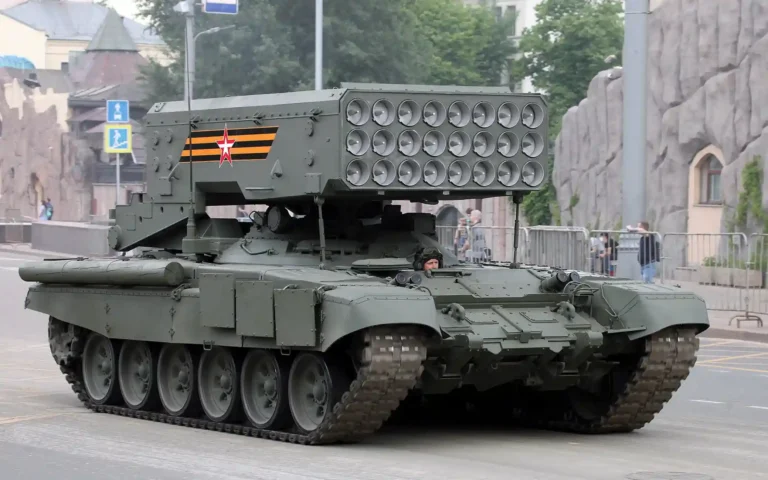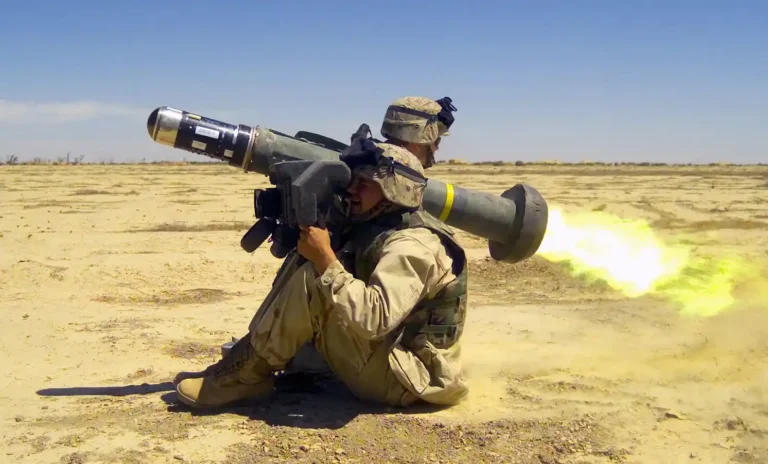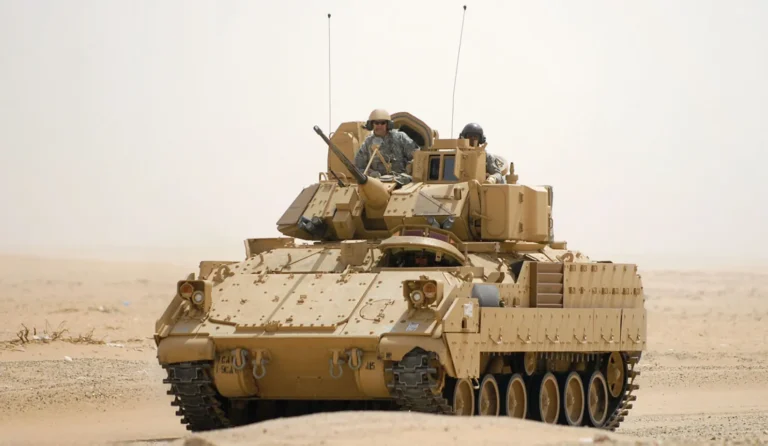Follow Us:
Share
Table of Contents:
The M1150 ABV (Assault Breacher Vehicle) is a specialized piece of U.S. military equipment designed for clearing mines and other explosives.
Built on the M1 Abrams tank chassis, the ABV is outfitted with a robust mine plow and powerful line charges, making it highly effective for breaching heavily fortified enemy defenses. Its notable deployment occurred during the War in Afghanistan, specifically in Operation Moshtarak in 2010.
During this joint International Security Assistance Force (ISAF) and Afghan National Army offensive against Taliban forces in Southern Afghanistan, the U.S. Marine Corps (USMC) utilized the ABV extensively for clearing dangerous minefields and explosives in preparation for troop movements.
Although the USMC retired the M1150 Assault Breacher Vehicle ABV by 2023, the vehicle resurfaced later that year.
In November 2023, an ABV was prominently displayed in Ukraine during a ceremony commemorating Ukraine’s Rocket Forces and Artillery and Engineering Troops Day, signaling potential interest or use by Ukrainian forces.
As of November 2023, a total of 239 M1150 Assault Breacher Vehicles had been produced.
M1150 ABV Design and Features
The M1150 Assault Breacher Vehicle (ABV) is built on the robust M1A1 Abrams tank chassis and is equipped with a specialized turret.
This turret houses two linear demolition charge systems, each integrated with a mine-clearing line charge (MICLIC) and rocket launchers designed for efficient minefield clearance.
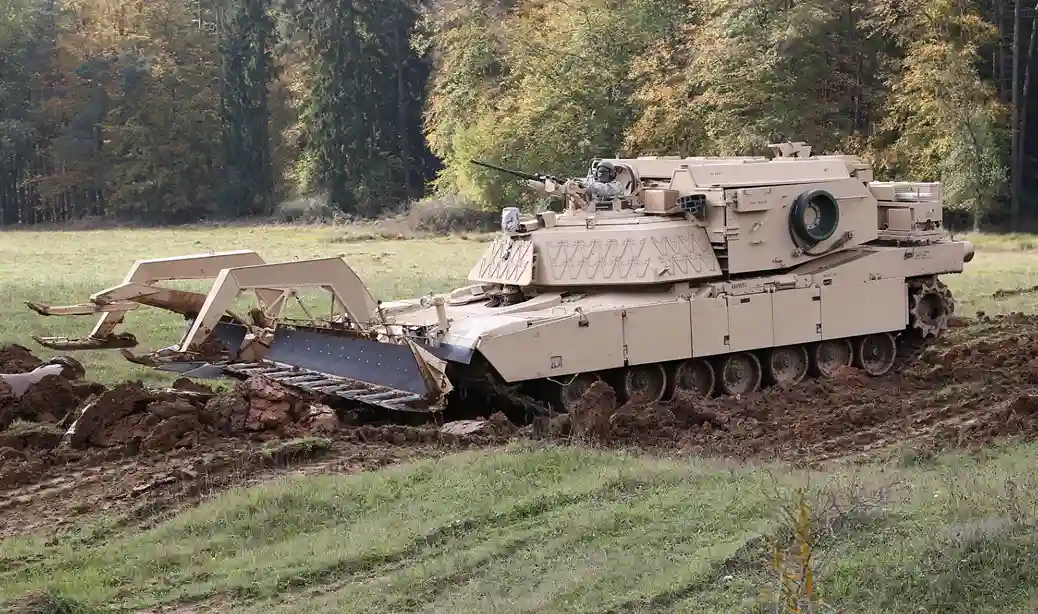
The vehicle is outfitted with a lane marking system (LMS) to visibly mark the safe passage, an integrated vision system (IVS) for enhanced situational awareness, and a high-lift adapter.
Depending on operational needs, this adapter allows the attachment of either a full-width mine plow (FWMP) or a combat dozer blade.
Weighing 72 tons and measuring 12 meters in length, the ABV is crewed by two operators. Its distinctive 4.6-meter-wide mine plow, positioned at the front, features durable metal skis that glide over the terrain.
As the vehicle advances, it uses one of its MICLIC systems to deploy and detonate explosives, creating a cleared path through minefields. The FWMP then reinforces this path, while the LMS ensures that the cleared route is marked for following vehicles.
M1150 ABV Assault
The vehicle is outfitted with a pair of M58 Mine Clearing Line Charge (MICLIC) launchers, specifically designed for remote demining operations.
These launchers are capable of creating a safe corridor through minefields, clearing a path that stretches 100 meters in length and 8 meters in width.
This allows for the swift and efficient removal of explosive threats, enhancing mobility for advancing forces in hostile environments.
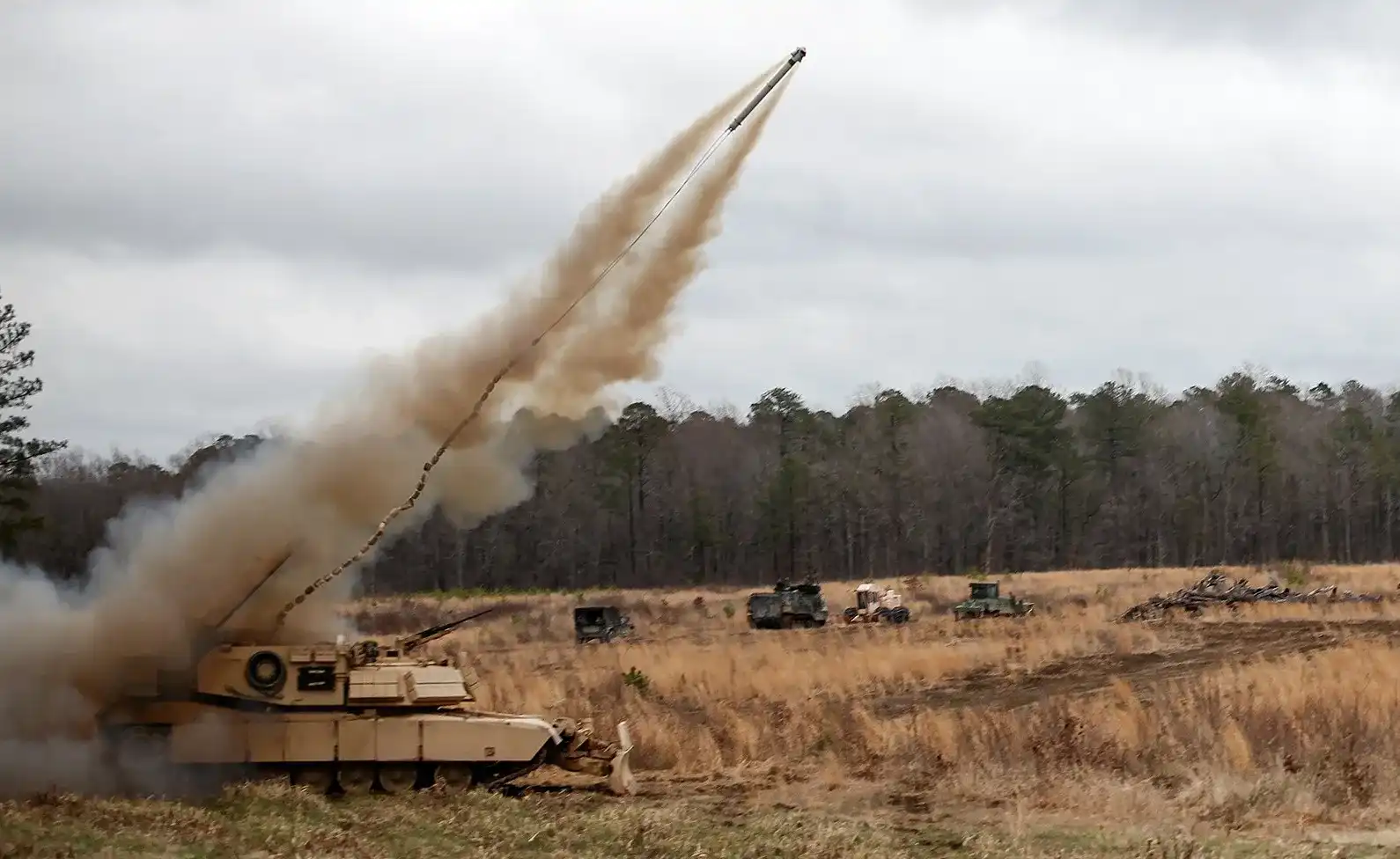
For self-defense, the crew is also equipped with an M2 Browning .50 caliber machine gun.
This weapon provides a robust defensive capability, allowing the crew to protect themselves from enemy personnel or light vehicles while conducting demining operations or during transit.
The combination of these systems ensures the vehicle’s dual function in both demining and combat scenarios.
M1150 ABV Engine
The M1150 is equipped with a highly powerful engine, delivering an impressive output of 1,500 horsepower. This robust engine capacity ensures that the vehicle can effectively handle demanding terrains and operational conditions.
The exceptional horsepower enables the M1150 to perform with agility and strength, making it well-suited for a variety of military tasks, particularly in environments where both speed and durability are critical.
This level of engine performance not only enhances the M1150’s mobility but also provides it with the capacity to carry out engineering tasks such as mine-clearing and obstacle-breaching.
With 1,500 horsepower under its hood, the M1150 maintains the operational efficiency needed in modern warfare, giving it a significant advantage in battlefield scenarios where both power and precision are essential for mission success.
M1150 ABV Operation
In December 2009, M1150 ABV was deployed in combat for the first time when U.S. Marines launched an offensive in Nawzad, a Taliban stronghold in Helmand Province, during Operation Cobra’s Anger.
This operation was a precursor to the larger assault on Marjah, another key Taliban stronghold located 380 miles (610 kilometers) southwest of Kabul, which took place in February 2010.
On February 11, 2010, two M1150 ABV fired explosive line charges near Sistani to probe Taliban defenses ahead of Operation Moshtarak, which aimed to seal off enemy escape routes.
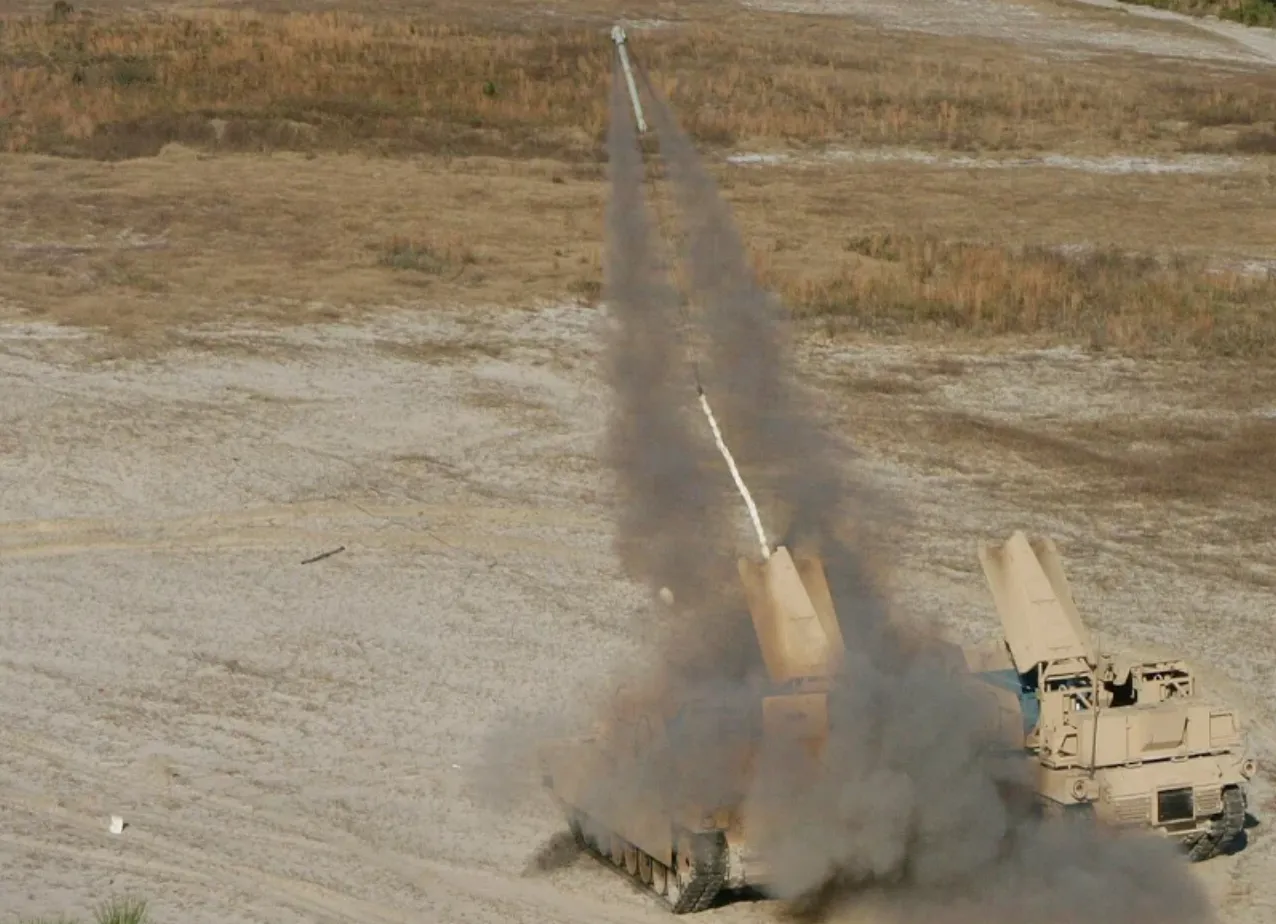
On February 13, 2010, the first day of Operation Moshtarak, M1150 ABV from the U.S. Marines’ 2nd Combat Engineer Battalion successfully carved out and blasted “safety lanes” through Taliban-planted minefields surrounding Marjah.
This marked a significant achievement in clearing pathways for advancing troops. A report from December 2009 indicated that five Assault Breacher Vehicles (ABVs) were operational in Afghanistan, with the U.S. Marines planning to field a total of 52 by 2012, of which 34 had already been produced. Additionally, the U.S. Army had placed an order for 187 ABVs.
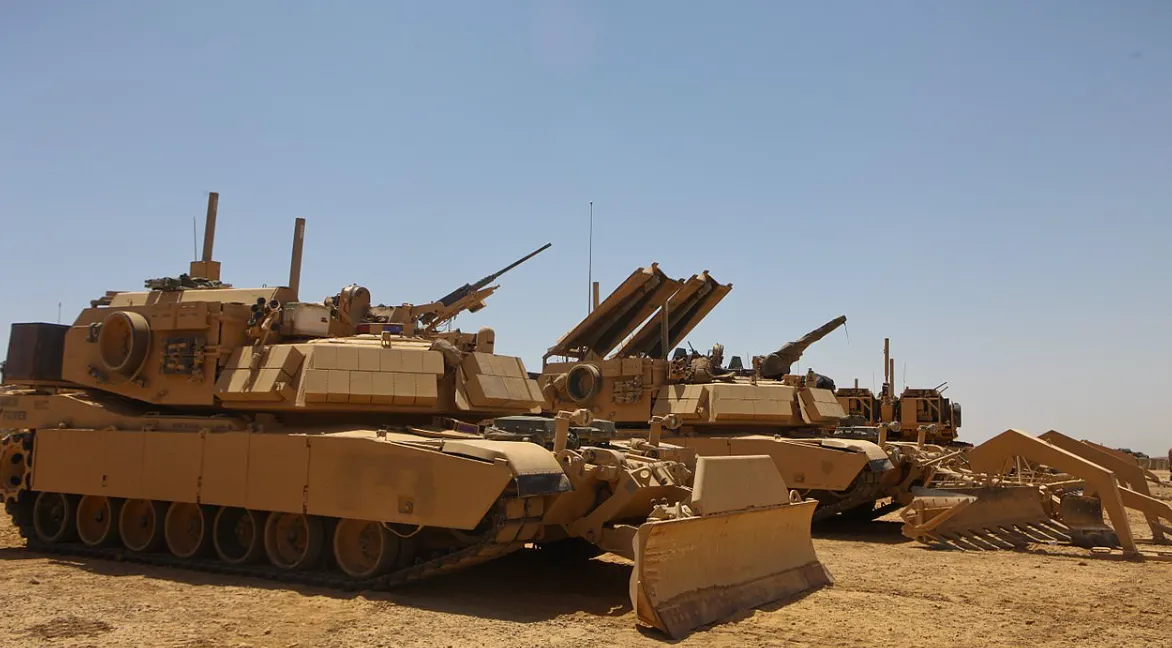
By August 2013, six ABVs were stationed on the Korean Peninsula to support the 2nd Infantry Division (2ID). Their primary role was to provide the division with the capability to breach minefields and other obstacles, particularly in the heavily mined Korean Demilitarized Zone (DMZ), which is believed to contain tens of thousands, if not millions, of landmines.
A previous deployment of MRAP (Mine-Resistant Ambush Protected) vehicles to South Korea led to accusations from North Korea, which claimed that these vehicles were intended to cross the DMZ for an offensive.
The MRAPs were later withdrawn due to their poor suitability for the Korean terrain. Interestingly, North Korea has not made any public statements regarding the arrival of the ABVs.
In 2019, the U.S. Marine Corps’ Force Design 2030 initiative included the decision to divest its armored units, including the ABV fleet. Most of the ABVs were transferred to the U.S. Army, making it the sole branch of the U.S. military with an under-arm or mechanical breaching capability.
By 2023, the Marine Corps had fully divested its ABV inventory. Meanwhile, in April 2021, the U.S. Department of State approved the sale of 29 M1150 ABVs to Australia, which are now operated by the Australian Army.
M1150 ABV Deliveries
In April 2021, the Australian government formally requested the acquisition of 29 M1150 Assault Breacher Vehicles (ABVs) from the United States through the Defense Security Cooperation Agency.
This procurement aims to enhance the capabilities of the Australian Army by adding specialized vehicles designed for breaching minefields and clearing obstacles.
The first shipment of these vehicles is expected to arrive in Australia by 2024. Once delivered, they are projected to reach initial operational capability (IOC) by 2025, marking a significant step forward in bolstering the Australian Army’s mechanized engineering assets.
M1150 ABV Specs
- Type: Military engineering vehicle
- Origin: United States of America
Service History
- Operational Period: In active service from 2009 to the present
- User Organizations:
- United States Army
- United States Marine Corps (served from 2009 to approximately 2023)
- Armed Forces of Ukraine
- Wars:
- Participated in the War in Afghanistan
- Engaged in the Russo-Ukrainian War
- Involved in the Russian invasion of Ukraine
Production Details
- Unit Cost: Approximately $14 million (fiscal year 2009)
- Total Units Built: 239 units
Technical Specifications
- Dimensions: Length of 40 feet (equivalent to 12 meters)
- Crew Requirement: Designed for a crew of 2 personnel
Armament
- Primary Weapon: Equipped with the M58 MICLIC (Mine-Clearing Line Charge)
- Secondary Weapon: Features a .50 BMG M2 machine gun, mounted on the vehicle’s top for additional firepower.
Share
Defense Feeds
Defense Feeds is publication focusing on informing, engaging, and empowering the world by providing accurate information from defense technology.
Powered by Defense Feeds © 2025 – All rights reserved.


